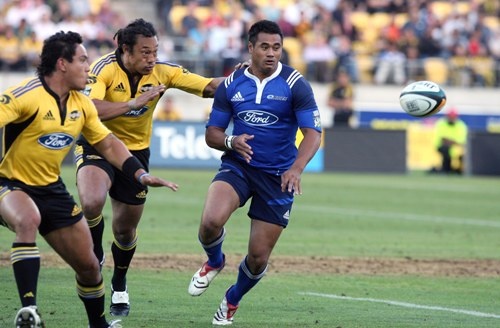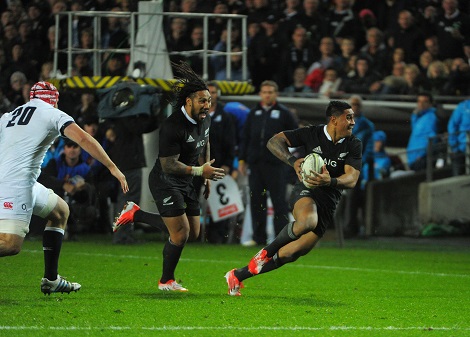- Rugby Toolbox
- Resources & Education
- Learn more
- Articles
- Snook on Coaching
- Beating the Drift
- Ruck & Run Drill
- Playing Philosophy – Ruck & Run Coaching Components
- Playing Philosophy – Spread the Forwards
- Playing Philosophy – A forward behind the ruck
- Playing Philosophy – Ruck & Run
- Playing Philosophy – An idea!
- The Breakdown
- Building Positivity [3]
- Building Positivity [2]
- Building Positivity
- Fitness and Game Related Activities
- Getting the Head Working
- Missiles are Dangerous
- Use of Video
- Winger Attacking Outside First-Five
- Player Profiling
- Selection
- Fitness Away from the Team Session
- Playing Philosophy (Pre season Prep)
- Coaching the Coaches
- The Rugby Coordinator and Pre-Season Preparation
- Why Not Use Tap Penalties More Often?
- Why Kick the Ball Down the Middle of the Field?
- Defending the 5 Metre Lineout Drive
- Scoring from the 5 Metre Lineout
- What are the Kicking Team Aiming to Achieve from Halfway Restart
- Should We Practice Scoring Tries?
- Team Culture
- Looking After Your Players
- Coach Survival Tips
- Under 11/13 – Backline Defence
- Under 11/13 – Ruck Defence
- Under 11/13 – Back Attack
- Under 13 – The Counter Attack
- Under 11/13 – The Maul
- Under 11/13 – Lineouts
- Under 11/13 – Decision Making
- Under 11/13 – Support Play
- Under 11/13 – Dive Pass and More
- Under 11/13 – Drop & Grubber Kick /Highball Catch
- Under 11/13 – Front on Tackling
- Under 11/13 – Contact – Getting Up – The Ruck
- Under 11/13 – The Coaching Session
- Under 8/10 – Using Space
- Under 8/10 – Kicking
- Under 8/10 – Contact and Picking Up the Ball
- U8/U10 Draw & Pass and Sidestep
- Under 8/10 – The Tackle
- Under 8/10 – The Coaching Session
- Under 7 – Test Your Coaching – Support Play
- Tap Pass and Swerve U7
- Ball Familiarisation; Passing & Receiving
- Activities for the Non-Contact Tackle
- Under 7 – The Coaching Session
- Coaching Teenagers – After the Ruck
- Coaching Teenagers – The Practice Session
- Coaching Teenagers – Best Practice
- Coaching Kids – Best Practice
- Plays from a Tap Penalty
- Running Plays from a 5 Man Lineout
- Driving Plays from a 5 Man Lineout
- Strike Plays at the End of the Lineout
- Back Strike Plays at the Lineout
- Wide Strike at the Scrum (2)
- Wide Strike at the Scrum
- Midfield Attack at the Scrum
- No 8 Plays at the Scrum (2)
- No 8 Plays at the Scrum
- The Cut Out Pass
- Skills to Penetrate (2)
- Skills to Penetrate
- Movements to Penetrate
- Patterns to Penetrate
- Contact and Continuity
- Keeping the Ball Alive Out Wide
- Pre Season Support Activities
- Checklist
- Understanding the game
- The Playing Philosophy
- The Lineout
- Overview
- Team Profile
- Start Now!
- Backrow
- Nine and Ten
- Rugby-related Fitness Activities
- The Psychological Edge
- Open Field Play
- Key Performance Indicators
- Improving Team Performance
- Backline Attack Concepts
- Tactics at Phase Play
- Playing Philosophy
- The ‘Stop Focus’
- Kick Attack
- Clearing the 22
- Wide Attack at Phase
- Player Focus
- Scrum Preparation
- Lineout Preparation
- Back Attack Preparation
- Sevens Preparation
- Sevens Kick Offs
- Sevens Scrum and Lineout
- Sevens Attack Patterns
- Sevens Defence
- 7's Selection and Game Planning
- Coaching and Leadership
- How the Game Evolves
- Changing Within the Game
- Learning from the Television.
- Using Tap Penalties Wisely
- Defence Drills
- Defence Drills for Tight Five
- Team Defence and TUB’ing
- Establishing Patterns from the Ruck
- Structured Phase Play
- Structuring Phase Play on the Run
- Coaching Roles
- Structuring a Close in Tackling/Defensive Session
- Coaching in Threes
- Attacking Back Play
- Kick Off Chase
- Wrap Around Back Plays
- Lineout Plans
- Looking and Learning
- Motivating Your Players
- Scrum Attack
- Refocusing the Team
- Monitoring the Progress
- Learning the Game
- Playing to the Laws
- Small is OK
- Decisions After the Tackle
- Improving Your Coaching
- Food for Thought
- More Food for Thought
- Passing & Catching
- How Ireland Nearly Beat the All Blacks
- The Progressive Coach
- Try Something New
- Encouraging Excitement
- The Mental Approach
- Where to Start
- Being the Best You Can Be
- Off the Ball Decisions
- Lineouts Difficult to Master
- Decisions on the Run
- Rucking and Rolling
- A Successful Approach
- Gaining Clarity
- Manipulation vs Physicality
- Beating the Drift
- To Ruck or Not to Ruck
- Stopping the Lineout Drive
- Fine Tuning the Planning
- It's a Running Game
- RugbySmart 2015
- Using the Shoulders
- Loosehead Prop / Tighthead Prop
- Position Specific – Hooker
- Position Specific – Lock
- Position Specific – Blindside Flanker
- Position Specific – Openside Flanker
- Position Specific – No 8
- Position Specific – Halfback
- Position Specific – First Five Eighth
- Position Specific – Second Five Eighth
- Position Specific – Centre Three-quarter
- Position Specific – Wing
- Position Specific – Fullback
Beating the Drift

It was like a breath of fresh air watching Malakai Fekitoa step in to the second five eighth spot for the All Blacks against Argentine and immediately add a new dimension to their attacking play. In fact the skills displayed by Fekitoa would suggest that this is his position in future test matches.
The big plus was his ability to straighten the attack and cause the defence to hold on him, thus creating greater opportunity for those around him. Of course he had the speed and strength to test their 1 v 1 tackling as well.
The best way to understand what it takes to do this is to watch the game footage and isolate the important aspects. Some of the key factors to look for include: receiving the ball out in front; carrying the ball in two hands; scanning the opposition prior to receiving the ball; immediately looking forward after receiving the pass; stepping on his outside leg to straighten towards the tackler coming in to his channel; accelerating quickly to hold the tackler; carry the ball in two hands; releasing the pass as the defenders hesitate.
Whatever you pick up make a note of it, devise a drill that will help develop the skill, and start practicing.
Using the game clock, there is an instance at 24 minutes where Fekitoa is the first receiver from a midfield ruck. He looks up, straightens and accelerates, and times his pass well. Fortunately Conrad Smith ran straight as well (which he inevitably does) and had an inside passing option (Israel Dagg) and an outside option (Ben Smith) . With Ben Smith receiving and running a line at the defenders inside shoulder it created space on the outside which Dagg used on the wrap and scored the try.
It was fortunate that each of the four players all did the right thing for the situation which thus ended up in a try. It would be an idea to create a drill that sets up this sort of situation with a 4 v 3 and practice it often enough so that the attackers score more often than not.
Around the 28 minute mark you will spot two more instances of Fekitoa straightening the attack.
At the 33 minute mark Fekitoa receives from Beauden Barrett, holds the defence by straightening and speeding up; he then chip kicks and recovers, with two more rucks following before Barrett grubber kicks through only for Julian Savea to be called back for being in front of the ball.
The main aspect here is that against a flat line defence two kicks which were both recovered did the trick. If you develop your drill to say 5 v 4 then kicking could be introduced. Get your wide runners running in on an angle to gather the ball.
A Richie McCaw fend would also be a handy tool for your appropriate players. You can view this at 42 minutes. Study the technique and include it in your drill.
There were several other patterns in the game devised to beat the drift and they could be worth a look.
At 11 minutes as 10 received 12 started a wide drift; 11 and 13 ran straight lines which held defenders, the pass went across 11 & 13 to 12 (Fekitoa again); 12 stopped his sideways run, straightened, accelerated forward ( which held the defence) and passed to 15 who had space and 14 on his outside. This left only one defender who was obviously under a great deal of pressure.
Of course everyone had to get their timing right so that the defence was held up, but once again Fekitoa was the key. The All Blacks did this again at the 20 minute mark but the blindside winger was not in the line (he was back a few metres) and so Fekitoa got tackled.
The Argentinians came up with a good play which they used a couple of times and it proved to be effective. In fact they really should have scored at the 30 minute point.
At a lineout the back two dropped off with the ball thrown to the front. 9 then passed to the closest of the two forwards with the second forward looking to receive from his mate and drifting out slightly to create space between the two and pull the defender across. At the crucial time as the ball carrier made his pass the blindside winger, who was running behind the ball carrier and obviously obscured to the defence, popped in to the hole and received a short pass on the burst. This created a huge space in behind the All Blacks, but which they were able to scramble out of.
When you look at this you could work out who should have been in support so that the Argentinians could score.
If you get the chance to watch Fekitoa then analyse what he is doing so that you can have more and more players in your team using these skills. Make up the necessary drills, teach the main points and practice hard. Your coaching phrase could be: “ Run at your opponent first-then decide”.